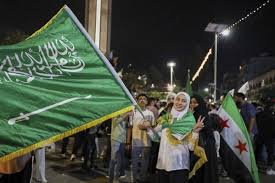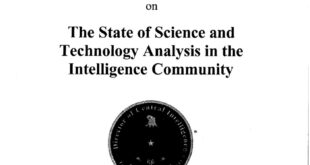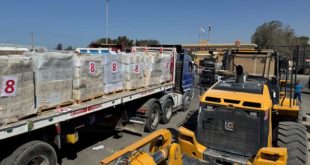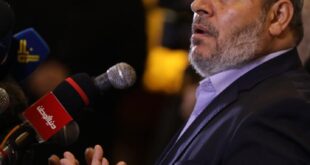In a dramatic pivot from years of international isolation, Syria is emerging from the shadows of war and sanctions into a new era of diplomacy, reconstruction, and economic ambition. The recent meeting between Syrian President Ahmad al-Sharaa and former U.S. President Donald Trump, hosted in Riyadh under the auspices of Saudi Crown Prince Mohammed bin Salman and attended virtually by Turkish President Recep Tayyip Erdoğan, marks a watershed moment in Syria’s reintegration into the regional and global order.
Diplomacy Redefined: A Moment of Strategic Realignment
The Sharaa-Trump encounter was far more than a ceremonial handshake. It was a powerful signal that the geopolitical map is being redrawn not according to ideology or history, but in response to shifting interests and regional pragmatism. The meeting underscored Syria’s desire to transition from a reactive, marginalized state to a proactive player in Middle Eastern diplomacy. As observers noted, the message was clear: Syria no longer seeks to be a pariah but a partner.
This symbolic and strategic shift was immediately followed by one of the most consequential policy decisions in years—Washington’s announcement to lift all U.S. sanctions on Syria. The sanctions, once levied against Bashar al-Assad’s regime for its atrocities and authoritarian grip, are now considered obsolete in the context of Syria’s post-Assad transition and new political landscape.
Economic Ripples: From Optimism to Structural Reform
The announcement of sanctions relief triggered an immediate wave of optimism within Syria’s financial markets. The Syrian pound saw a modest but notable appreciation, and investor sentiment began to thaw. “The atmosphere has changed overnight,” said Finance Minister Mohammad Yusr Barniya in an interview with Syria TV. “This is a historic turning point—an opportunity for Syrians to rebuild their state and economy on new foundations.”
Barniya emphasized that the lifting of sanctions will allow Syria to reconnect with international financial systems, access modern technology, attract foreign investment, and initiate a comprehensive reform agenda. Plans are already underway to reintroduce a new national currency and to restructure Syria’s banking sector. A cautious but deliberate effort is also being made to draft tax and customs reforms and strengthen anti-money laundering laws.
Importantly, Barniya stressed that Syria is not seeking loans from international financial institutions at this stage. “We aim to create a self-sustaining, investment-friendly environment where the private sector can lead growth.”
A Model of Development? Ambitions from the Ministry of Economy
Echoing this new direction, Minister of Economy Mohammad Nidal al-Shaar described sanctions relief as “the essential gateway to Syria’s economic renaissance.” In his view, the years of hardship under Assad’s rule left not only infrastructural destruction but also a psychological and institutional legacy that must now be dismantled. “We need to break with the inherited mindset of the fallen regime,” he said, referring to the centralized, opaque governance that stifled growth for decades.
Al-Shaar envisions Syria becoming a model of sustainable development. “We are not going back,” he insisted. “Our goal is to offer a new kind of economy—productive, transparent, and open to regional and international cooperation.”
One of the most significant outcomes, according to al-Shaar, is the reinstatement of access to the SWIFT financial system, which will facilitate secure international transactions without fear of scrutiny or sanctions. This access is expected to accelerate the return of Syrian entrepreneurs and industrialists who had previously hesitated to re-engage with the local economy.
Not a Blank Check: Sanctions on Assad’s Circle Remain
Despite this breakthrough, both ministers affirmed that sanctions will remain in place on individuals and entities associated with the former Assad regime. “We support the continued isolation of those who were complicit in Syria’s destruction,” said al-Shaar. “This is not about erasing the past—it is about ensuring that the future is not built on impunity.”
Both Barniya and al-Shaar emphasized that Syria’s path forward will prioritize economic liberalization while safeguarding public welfare. Government efforts are focused on rebuilding infrastructure, boosting agriculture, modernizing telecommunications, and revitalizing education and health sectors.
From Isolation to Influence: A Delicate Balance
The diplomatic and economic reorientation does not imply abandonment of principles. President Sharaa’s government has carefully calibrated its moves to avoid alignment with any single bloc or agenda. “We are seeking balanced openness, not blind allegiance,” noted one official familiar with the talks. This strategy—what some call “the art of the possible”—is designed to maximize gains while minimizing confrontation.
Syria’s leadership appears fully aware that credibility must be earned both at home and abroad. As one analyst put it, “The question is no longer who governs Syria—but how Syria will be governed, and whether it can embody the inclusive, law-based vision it now projects.”
The Road Ahead
For a country long defined by siege and collapse, the shift is monumental. But the transformation remains fragile. Will Syria’s domestic institutions be able to keep pace with the opening? Will regional and international actors accept its new posture? And most importantly, will the Syrian people themselves feel empowered in this new chapter?
The coming months will provide the first answers. But one thing is clear: Syria has stepped into a new phase—one defined not by isolation, but by ambition.
 Eurasia Press & News
Eurasia Press & News




